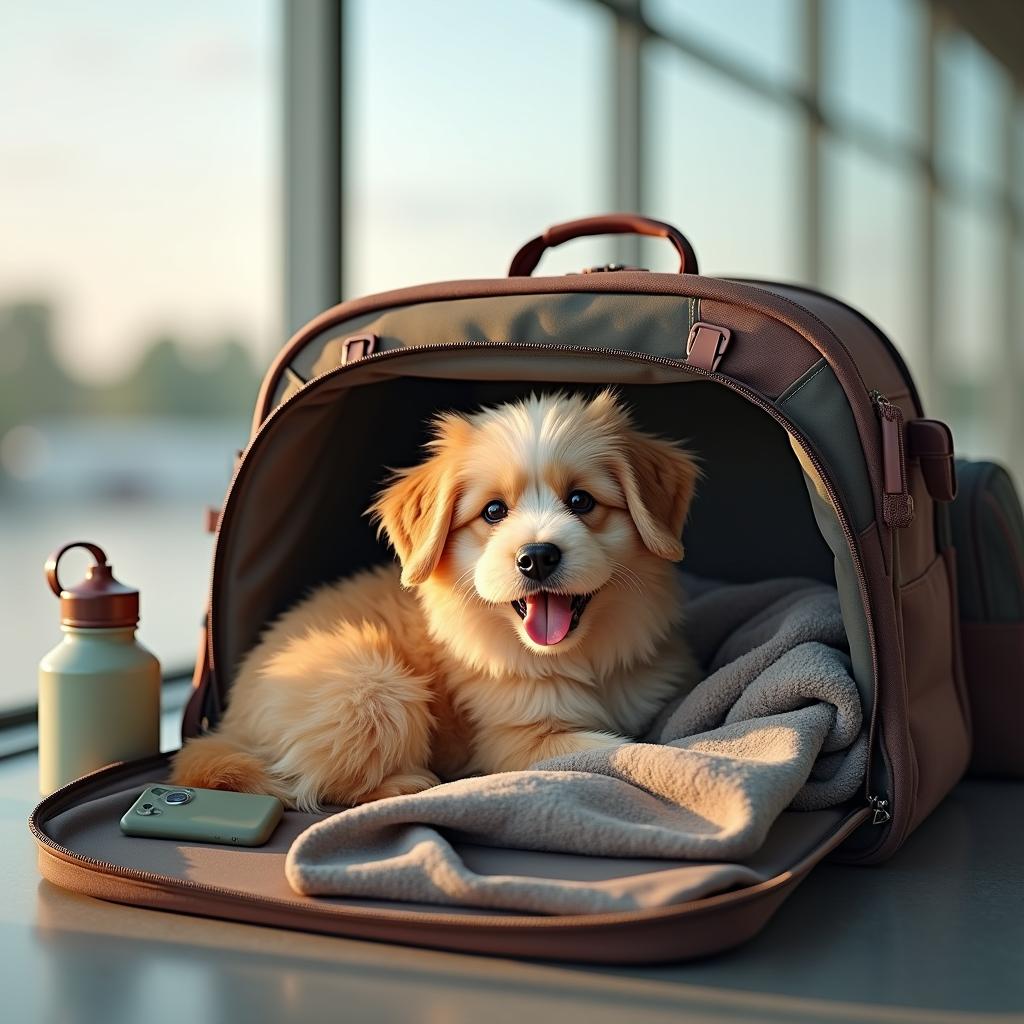How to Choose the Right Pet Carrier for Safe and Comfortable Travel

Table of Contents
- The Importance of Choosing the Right Pet Carrier
- Understanding Size: How to Choose the Right Dimensions
- Types of Pet Carriers: Which One is Best for You?
- Safety First: Key Features to Look for
- The Role of Ventilation in Pet Carriers
- Traveling with Your Pet: Essential Tips
- Airline Regulations and Carrier Requirements
- Conclusion: Making Travel Enjoyable for You and Your Pet
- FAQs about Pet Carriers
The Importance of Choosing the Right Pet Carrier
Alright, folks, let’s get real! When you’re traveling with your pets, that right carrier can make or break the whole experience. It’s not just about safety during your journey — it’s about giving your furry pals a familiar and cozy environment. Did you know that around 2 million domestic animals board commercial flights every single year? Yep, pet travel is totally on the rise! But hold up, travel can be kinda stressful for our four-legged friends, especially for dogs and cats, who make up 58% and 22% of plane-friendly pets, respectively. So, choosing the right pet carrier isn’t just a suggestion; it’s essential for keeping their anxiety in check and ensuring their well-being on the road!
Understanding Size: How to Choose the Right Dimensions
Let’s break it down: the size of that pet carrier? Super important! You want to make sure your furry buddy has enough room to stand, turn around, and lie down without feeling cramped. So, grab that measuring tape, check your pet’s height and length, and then pick a carrier with a little extra wiggle room! A classic mistake is going for something too small — trust me, that snug fit can lead to discomfort and stress.
For instance, if you’re traveling with a medium-sized dog, choose a carrier that lets them chill comfortably. And hey, why not invest in an adjustable carrier that’ll grow with your pet? This way, they’ll have a space they can associate with travel, making the whole experience smoother!
Types of Pet Carriers: Which One is Best for You?
You’re probably wondering, “What kind of pet carrier should I get?” Well, there are a bunch of options out there, and each has its perks. Check these out:
- Hard-Sided Carriers: These bad boys are tough and provide maximum protection for your pet. They’re perfect for flights since they meet most airline requirements. Plus, many have secure locking mechanisms to keep your furry friend safe and sound!
- Soft-Sided Carriers: If you’re all about light and easy, these are your go-to! Soft carriers are often easier to stow away and can slide into tighter spots, making them champs on road trips or public transport.
- Backpacks and Slings: Perfect for those pint-sized pets, these options let you carry them with ease. Your hands stay free, which is totally a win! Just make sure they’ve got proper ventilation and safety features.
By assessing your travel needs along with your pet’s personality, you’ll find the carrier that’s a perfect match!
Safety First: Key Features to Look for
Listen, people! Safety has got to be your number one priority when choosing a pet carrier. Make sure to look for carriers that boast these essential features:
- Secure Fastenings: You want zippers, clips, and locks that are reliably secure — we don’t want any escape artists on our hands!
- Sturdy Construction: Whether you opt for hard-sided or soft-sided, ensure it’s made from durable materials that can handle any bumps along the way.
- Reflective Material: Some cool carriers come with reflective materials that help increase visibility during those nighttime travel escapades.
- Safety Harness: Some have built-in harnesses that let you keep your pet secure while on the move — gotta love that!
Considering these safety features will set you up for a journey that’s protective and worry-free.
The Role of Ventilation in Pet Carriers
Fresh air? Yes, please! Ventilation is a must-have feature when picking a pet carrier. It keeps airflow going to prevent your pet from overheating or feeling anxious. Keep an eye out for carriers with multiple ventilation points — mesh panels or air vents work wonders. Fresh air makes a big difference and helps reduce stress levels during the trip!
There’s research that shows proper ventilation not only cuts down on heat-related issues but also limits anxiety. Always ensure your chosen carrier lets in enough air, especially if you’re traveling in hot weather!
Traveling with Your Pet: Essential Tips
So, you’ve got the perfect carrier — awesome! Now, let’s talk about some extra tips for making your journey with your pet even smoother:
- Introducing Your Pet to the Carrier: Before you hit the road, give your pet some time to check out their carrier at home. Throw in some treats or their favorite toys to create a positive vibe!
- Plan Breaks: If you’re making a car trip, don’t forget to schedule breaks. Let your pet stretch, hydrate, and do their business — it’s a win-win!
- Stay Calm: Your pet can totally pick up on your vibes. Staying calm and cool will help reassure them, making for a smoother ride overall!
These practical pointers are here to help you both enjoy a comfy trip, no matter if it’s a long road trip or just a quick vet visit.
Airline Regulations and Carrier Requirements
Flying with your pet? You better check out those airline regulations. Each airline has its own rules regarding pet carriers — think dimensions, materials, and special features. A lot of airlines will allow small pets to chill with you in the cabin, as long as they fit under the seat in front of you. But if your pet is on the larger side, they’ll need to go in the cargo hold, meaning you’ll need a more secure, hard-sided carrier.
Double-check all the details before your trip to avoid any last-minute stress. According to Mega Choice Bazaar, keeping compliant with these rules means a smoother travel experience for you and your furry friend!
Conclusion: Making Travel Enjoyable for You and Your Pet
Finding the right pet carrier isn’t just about comfort; it’s about ensuring safety and convenience for your beloved furball. Take the time to get to know the different types of carriers, their must-have features, and best travel practices. You’ll set the stage for an enjoyable, stress-free adventure for both you and your pet!
Oh, and don’t forget to check out the awesome range of pet carriers at Mega Choice Bazaar, where you can find options that prioritize safety and comfort for your furry pals! Happy travels!
FAQs about Pet Carriers
1. What size pet carrier do I need?
To nail down the right size, measure your pet’s height and length. Make sure there’s enough space for them to stand, turn around, and lie down comfortably.
2. Can I take my pet on a plane?
You bet! Most airlines will let you travel with your pets, but each has its own rules about the type of carrier, size restrictions, and travel arrangements.
3. What materials should a pet carrier be made from?
Go for carriers made from durable, non-toxic materials built to withstand travel. Hard-sided carriers are excellent for safety, while soft-sided ones are super convenient!
4. How do I make my pet comfortable during travel?
To keep your pet comfy, let them get to know the carrier ahead of time, use their favorite blankets or toys, and make sure they get good ventilation on the go.
5. Are there any regulations for pet carriers when traveling abroad?
Absolutely! Each country may have its own rules regarding pet travel. Make sure your carrier meets any specific requirements, and check in with the airline and local regulations before you take off.









Leave a comment